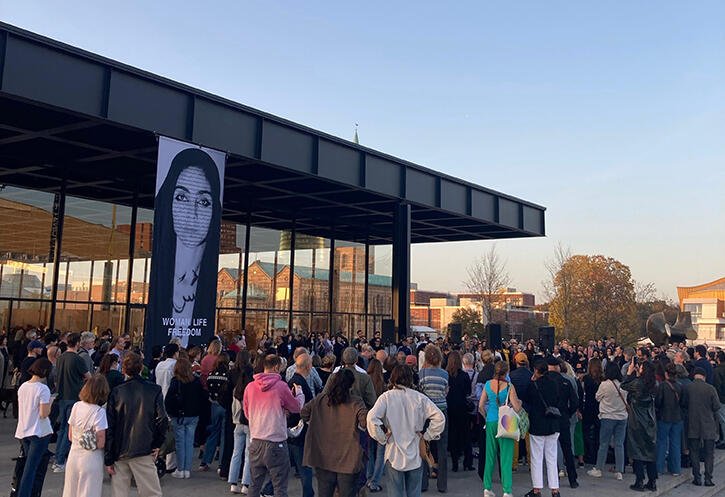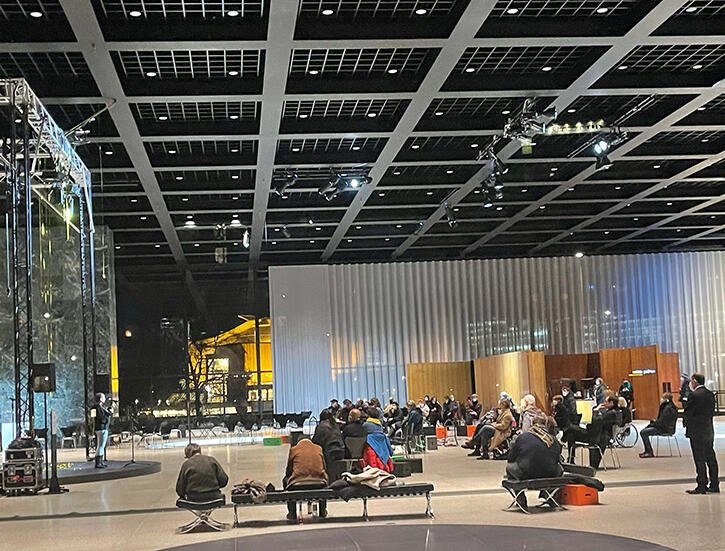Klaus Biesenbach on Museums in an Age of Crisis

Andrew Durbin: In August, the International Council of Museums (ICOM) approved a proposal to redefine the museum as ‘a not-for-profit, permanent institution in service of society that researches, collects, conserves, interprets and exhibits tangible and intangible heritage’. ‘Open to the public, accessible and inclusive, museums foster diversity and sustainability,’ ICOM’s website continues, ‘They operate and communicate ethically, professionally and with the participation of communities, offering varied experiences for education, enjoyment, reflection and knowledge sharing.’ What are your thoughts on this?
Klaus Biesenbach: This is a radical update to the needs and roles that museums must fulfil today. At their best, museums facilitate change, protest, exchange and substantial conversation. ICOM’s definition frees institutions from a historic fixation on the autonomous object. In my career, I’ve tried to bring more ephemeral works – performance, music, ecological and social practice – into museums: at the Museum of Modern Art in New York, for example, when we built the rescue dome on the Rockaways after Hurricane Sandy in 2012. I wonder how museums will react to this definition – that they are for the people, not just the objects – and whether it will shift their programmes. It remains important, however, that we do this work with art and artists in mind.
AD: You’ve called for museums to do more to help people during the cost-of-living crisis, like staying open later for those who are struggling to keep warm.
KB: Earlier this month, we signed a manifesto at the mayor’s office in Berlin arguing that museums need to do just that. Many people fear that I will turn the Neue Nationalgalerie into a shelter, but the museum will help as a museum – foregrounding art and artists. For example, we just organized a solidarity weekend for those protesting in Iran. The artist Shirin Neshat connected us with an incredible scene of Iranian artists, musicians, poets and activists in Berlin. We offered them a stage and we learned so much together! When a museum organizes a protest, it's a protest by, and with, artists and activists.
AD: What do you make of Just Stop Oil directly situating the museum as a site for protest against fossil fuels? Some people feel their activism not only puts paintings at risk, but also their own cause.
KB: We had a very sad incident in Berlin recently, when emergency services were unable to reach an accident victim in time because climate activists had glued themselves to a highway, blocking access. That changed public perception. But we should all remember that the gloomy picture the climate activists are painting is real, and we have to act now. The fact that activists have chosen museums for their protests is proving the new ICOM definition right. Whether museums want it or not, they are the sites of these necessary, existential debates.
AD: You were once associated with this idea of the globe-trotting, everywhere-at-once curator. That’s fallen out of fashion, given the climate crisis, of course, and I’m wondering how you balance a more sustainable approach to the local and the regional with a desire to maintain the internationalism that is so important both to the arts and to your approach to curating?

KB: These days, I don’t go to an opening or an art fair unless it’s essential, and I do a lot of studio visits on Zoom. At the museum, we are trying to ship by boat rather than air. But art is one of the few things that does not mediate well; that is the reason people still go to a museum to see a show after coming across it on social media. There is an incredible quality to an in-person encounter with a work of art: sometimes, it leads even to an epiphany. In the 1990s, art was seen as a universal language, globalization was a good thing, and English – not my mother tongue – was the lingua franca of the art world. Times have changed.
AD: The idea of a globalized art world was also about moving the discourse away from historic art centres, like London and New York, to see the bigger picture in communities otherwise ignored by Western institutions. Do you think this reversion towards localism puts any of that at risk?
KB: The move to localism will impact us in many ways. When we focus on local communities, as well as local products and local businesses, I do worry about whether that can slip into a form of nationalism. We live in a world of multiple tectonic shifts, all happening at the same time. The globalized art world of the 1990s – when so many international biennales were founded to help diversify canons and broaden our perception of where and how artists live and work – was crucial. Growing up, I didn’t want to be German: I would tell everyone that I was European.
AD: You’re living in Berlin again for the first time since the early 2000s. How has the city changed?
KB: In 2003, then-mayor Klaus Wowereit famously described Berlin as ‘poor but sexy’. Now, it is ‘poor but expensive’. That is a huge change. But Berlin has a chance to survive as a city for experimental and innovative artists if it learns to embrace new arrivals, curious students and seniors, migrants and refugees. I hope it can do that now that London is no longer an option for many coming from and to Europe.
AD: You’re not a policymaker, but I wonder whether you think major museums, given this new definition, now have a responsibility to lobby for certain policies – affordable housing, for example – that are more favourable to artists, especially young artists. The equitable and all-embracing Berlin you’ve just described is lovely, but it will only exist if fairer laws are passed. My issue is with ICOM’s phrase ‘fostering sustainability’ is that it sounds positive, but it means nothing if we don’t clarify what ‘fostering’ and ‘sustainability’ mean.

KB: In Europe, museums are much farther from the art market, and auction houses and much closer to politics and civic discussion. In the US, I felt politicians didn’t want to get involved with art; at least in Germany, we understand that freedom of expression is a seismograph for measuring democracy. So, I do see lobbying as part of our responsibility, but we must also give space to the voices of artists for whom these things are a major need. US museums have benefit galas to raise money and thank donors. Here, our ‘trustees’ are the German taxpayers so, this year, we prepared a large thanksgiving table to which ‘everybody’ was invited. I learned a lot from those conversations – sometimes from people who had never been to the museum before.
AD: You’ve been active in supporting Ukrainian artists throughout the war. Could museums in the West be doing more?
KB: In March, we held ‘Our Space to Help’: a 36-hour vigil at the Neue Nationalgalerie, attended by more than 7,000 people. Olafur Eliasson placed a light beacon at the museum entrance while Anne Imhof installed an open mic where performers sang Ukrainian songs and read diaries from those living in Kyiv. It made this moment more tangible to be at a mediated event. But Ukraine shouldn’t be our only cause: we must be open to new challenges that are just around the corner. Migration caused by the climate emergency will pose changes for all of us. We should start embracing them now. For me, the biggest challenge is how to prevent societies from becoming an echo chamber and succumbing to intense polarization. I still have hope that art and museums can play a role in ensuring open debate.
Main image: Maria Kulikovska, 254, 2022, performance art. Courtesy: © Nationalgalerie – Staatliche Museen zu Berlin.